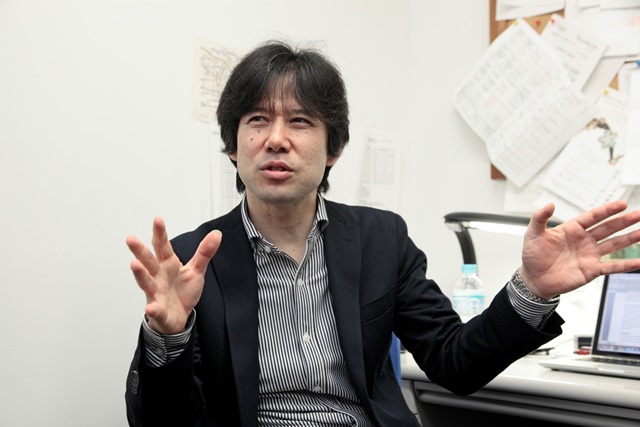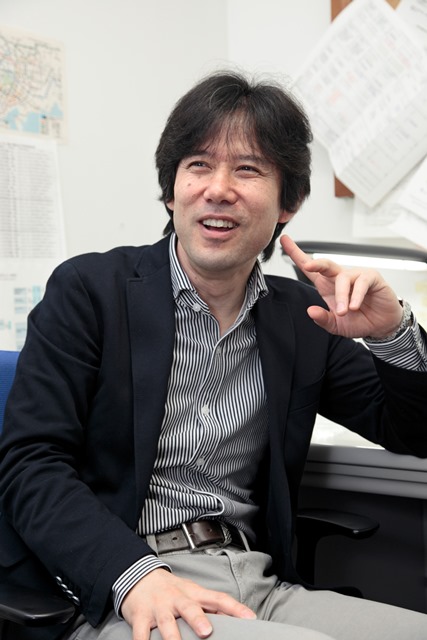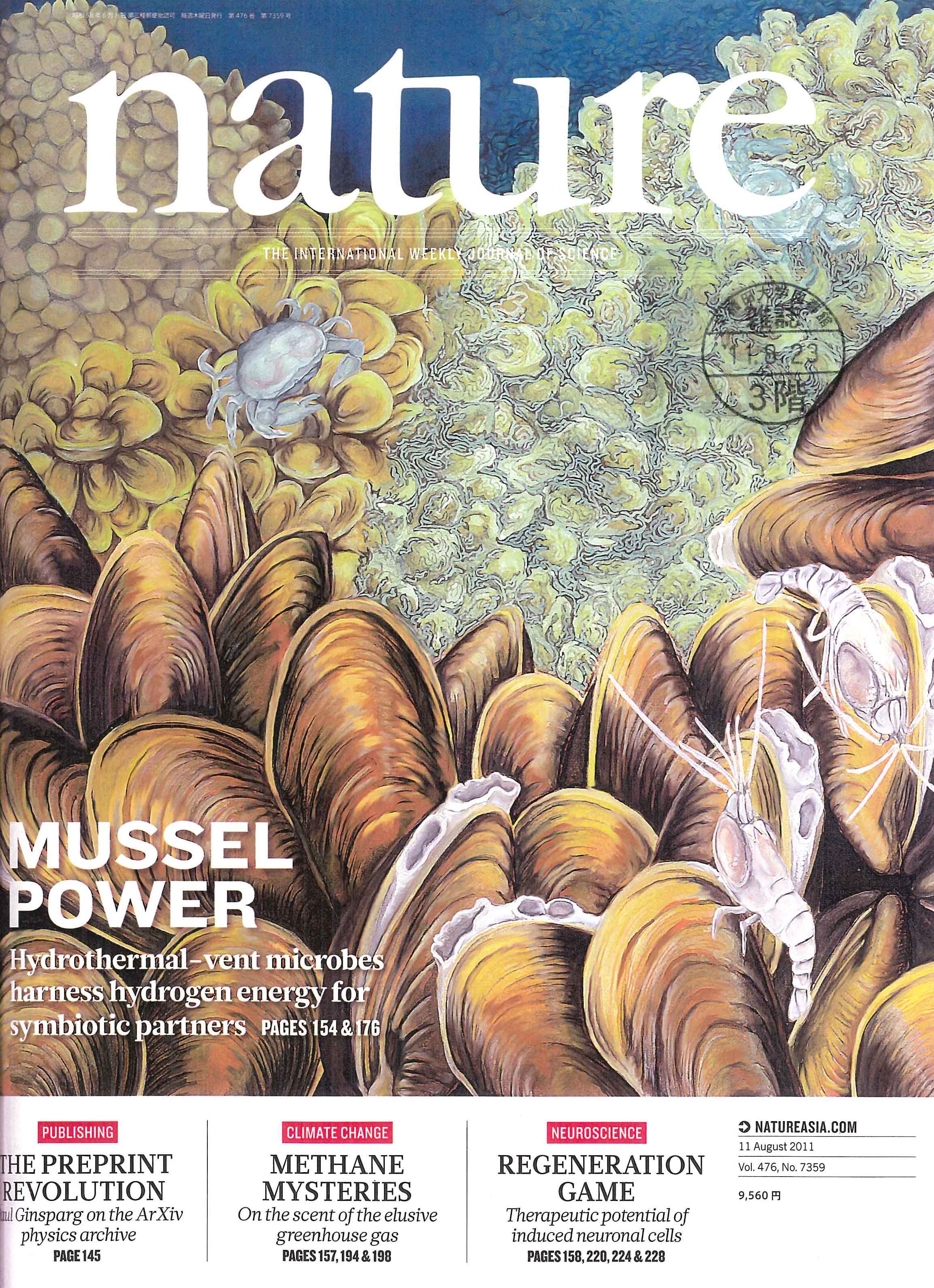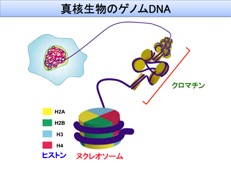Waseda Frontline Research Vol.1, Part 1 – Epigenetics pioneer Hitoshi Kurumizaka
Mon, Jul 13, 2015-
Tags
Epigenetics: A new field of genetics

Human beings are discovering a new science of genetics.
Conventional genetic science has told us that DNA, found in all of our cells, was the most important blueprint for forming our bodies and passing on genetic information to subsequent generations. However, epigenetics, a new concept in genetics, has the potential to dramatically change this view.
What does epigenetics tell us? We asked Dr. Hitoshi Kurumizaka, professor at Waseda University’s School of Advanced Science and Engineering, to describe the whole picture to us.
First in the world to explain the structure of centromeres

Professor Hitoshi Kurumizaka
My specialty is a new field of genetics called epigenetics. Using an original technology, our research lab became the first in the world to analyze centromeres, the backbone of the human chromosome, and to determine their structure. I described this in a paper entitled “Crystal structure of the human centromeric nucleosome containing CENP-A,” published in Nature in 2011 (Fig. 1).
The centromere is the link at the center of the X-shaped chromosome (Fig. 3). During mitosis, it plays an important role in evenly distributing deoxyribonucleic acid (DNA), which is the main genetic material, to daughter cells or chromatids. We succeeded in synthesizing the centromere’s parts, assembled the base of a centromere inside a test tube and determined its structure.
Determining the centromere’s structure is expected to help in identifying the causes of diseases such as Down syndrome. It is also expected to elucidate the genetic mechanism of separation and inheritance. It could even spark a revolution in cancer treatment.

Structural biology: “Nucleosome of a centromere.”
Nature Vol. 476, August 11, 2011.
Reprinted with permission from Macmillan Publishers Ltd.

Fig. 2: The molecular structure of a centromere, which Kurumizaka discovered. It has the same basic structure of a chromosome, but the DNA is opened toward the outside (the parts marked “mobile”).

Fig. 3. The position and function of centromeres inside a chromosome.
The part circled in red above, in the center of the chromosome, is the centromere. When the cell divides, it is pulled from both sides by spindle fibers, and the cells are evenly distributed to two daughter chromatids (top right).
Things that decoding the human genome did not tell us
Epigenetics is a field of research that aims to explain the so-called genetic switch that controls the expression of genes, which compose the structure of each organism. This perspective has marked a historic turning point in conventional genetics and molecular biology.
When you hear the word “gene,” you may recall the human genome project that was completed in 2003. Scientists in those days believed that if they could decipher all the human genome sequences, the blueprint of a person, they would be able to understand everything about that person. However, this blueprint was unable to completely explain the human mechanism.
We develop from a single egg cell. This cell divides repeatedly to ultimately form an organism with approximately 40 trillion cells. All these cells carry the same genetic information. The cells that make up the human body differentiate to form tissues with different functions such as the hands, feet, heart or liver. When a hand is formed, for example, only the genes needed to form a hand are “switched on”. In other words, all the genes other than those used to form a hand remain switched off. Finding out how this switching on and off works is what my research is all about.
Seeking the genetic switch
A DNA string, which stores all of a person’s genetic information, measures 2 meters long and carries 6 billion pieces of data (3 billion each from the father and the mother). Something this long is packed in a nucleus, inside a cell of only 10 micrometers in length. Unless it is folded neatly, it can get tangled up and broken into pieces. DNA is packed in a structure called a chromatin, a chain of spools, called nucleosomes and made up of eight proteins called “histones” with DNA wrapped around them. (Fig. 4).
In the past, chromatin was believed to merely be a mechanism for storing DNA appropriately. The latest epigenetics research has shown, however, that chromatin plays a crucial role in controlling cell differentiation. Among its functions, the one I am focusing on is mobility.

Fig. 4. The DNA of eukaryotes
Chromatin store DNA as a chain of spools, called nucleosomes and made up of eight proteins called histones.
About this mobility, we conducted research to identify the differences between the part where genetic information is being read and the part where it is not. The difference found was the chromatin’s dynamic structure.
Looking closely at chromatin, found in the cell nucleus, there are places where DNA is packed up tightly (heterochromatin), and places where it is packed loosely (euchromatin). Detailed analysis using advanced sequencers and other devices also revealed that genetic information is read by RNA polymerase at places where the chromatin is loosely packed. We are now on the verge of finding out how chromatin becomes loose, and therefore how the genes that control cell differentiation are turned on.
Research such as this is not possible without structural analysis of chromatin. Structural analysis is extremely difficult with samples taken from real organisms, because the contents are not homogenous. In order to determine its structure, we need chromatin that is extremely high in concentration and purity. At our lab, therefore, we use genetic manipulation to synthesize proteins and DNA, the components of chromatin, using bacteria and cultured cells. We then turn it into a stable, freeze-dried powder form. This is recognized world-wide as cutting-edge technology.
Profile

Hitoshi Kurumizaka
1989: Graduated from the School of Pharmacy, the Tokyo University of Pharmacy and Life Sciences; licensed pharmacist.
1995: Completed Ph.D. at the Graduate School of Science and Engineering, Saitama University.
1995–1997: Postdoctoral Fellow, US National Institutes of Health (NIH).
1997–2003: Researcher, RIKEN.
2003–2007: Assistant Professor, Department of Electrical Engineering and Bioscience, Faculty of Science and Engineering, Waseda University.
2001–2007: Visiting Associate Professor, Department of Science of Biological Supramolecular Systems, Graduate School of Integrated Science, Yokohama City University.
2007–2008: Associate Professor, Department of Electrical Engineering and Bioscience, School of Advanced Science and Engineering, Waseda University.
2008–2012: Visiting Professor, Graduate School of Integrated Science, Yokohama City University.
2003–2015: Visiting Researcher, RIKEN.
2012 to present: Guest Professor, Graduate School of Medical Life Science, Yokohama City University.
2008 to present: Professor, Department of Electrical Engineering and Bioscience, School of Advanced Science and Engineering, Waseda University.













